Introduction
The Maruti 800 was introduced as a modern people’s car, with a design that was cutting edge for 1983. It was ex-Prime Minister Indira Gandhi’s cabinet in 1971 which proposed the creation of a car for the middle-class and emulate the Volkswagen Beetle’s success in Germany.
The production of the Maruti 800 finally saw the light of the day in 1983, and it would change the way people looked at four-wheeled personal mobility forever.
It was modern, as opposed to the PAL Padmini, PAL 1100 Special, PAL 118 NE and HM Ambassador, both visually and mechanically. It had a front-wheel drive layout, had a small engine and offered great fuel efficiency. It was smaller and was not required to provide any aspirational value, rather a practical, no-frills car. And it was affordable and a brilliant choice.
In five years, the 800 spawned a newer generation which was larger and had a functional boot and an air cooler as an option.


PAL 1100 Special
(Image source)

HM Ambassador
(Image source)

Maruti 800
(Image source)
1983 - Maruti 800 SS80
The Maruti 800 SS80 was the first car to bring a Front Wheel Drive layout in a car. FWD layout coupled with a monocoque body meant the vehicle was much easier to manoeuvre compared to Ambassadors and Padmini's. Also, the lightweight monocoque body meant that it was quick and frugal.
The biggest game changer isn’t that it was a hatchback, that it brought about a bright red colour as an option or that it was smaller. It was the price, the price was only Rs 37,000 to Rs 45,000. It allowed the common folk to enjoy the benefit of owning a car at a pocket-friendly price.

Maruti 800 front three quarter view
(Image source)

Maruti 800 front view
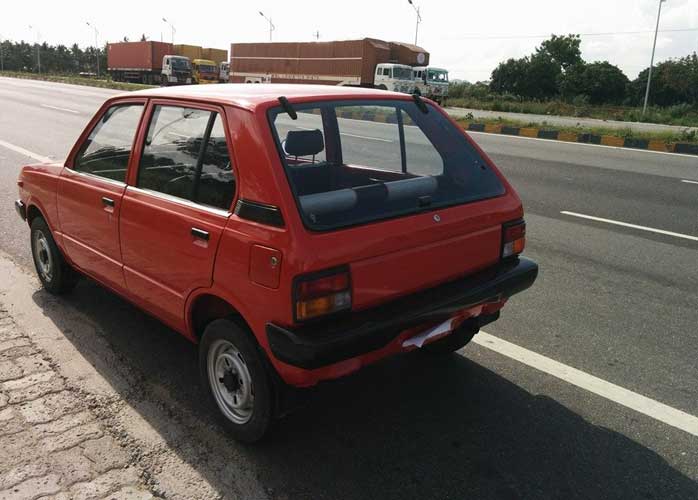
Maruti 800 rear view
(Image source)

Maruti 800 rear view
(Image source)
1986 - Maruti 800SB308
The Maruti 800 SB308 was the first time any hatchback had a pronounced D – pillar. There is a glass window right behind the rear door, which improves visibility towards the rear end of the vehicle.
SB308 is the code word for Suzuki Body 3 door and 0.8 L Engine.
The rear had a distinctive feature of having the numberplates bordered by two lights on each side. The car was larger at around 3335 mm in length and featured a fully functional rear door.

Maruti 800 front three quarter view
(Image source)
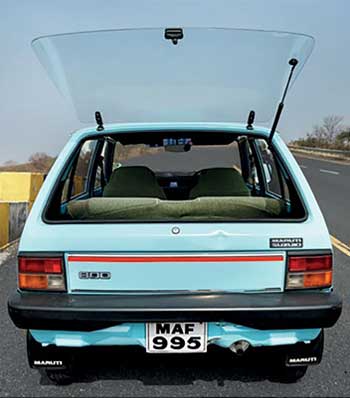
Maruti 800 rear window
(Image source)
The most noteworthy disadvantage of the Maruti 800 was the lack of a rear door. Only the rear glass could be opened, as there was a negligible amount of boot space.
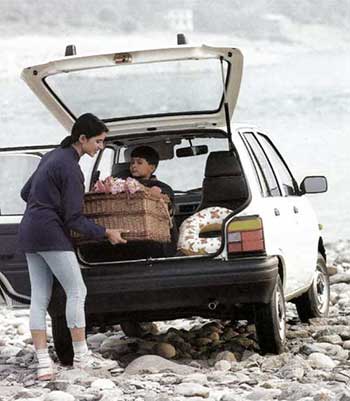
Maruti 800 rear hatch
The SB308 was longer and had a proper D- pillar and a functional rear door. This allowed the users to have easy access to the boot and essentially rendered the 2nd generation 800 as a proper 5-door car.
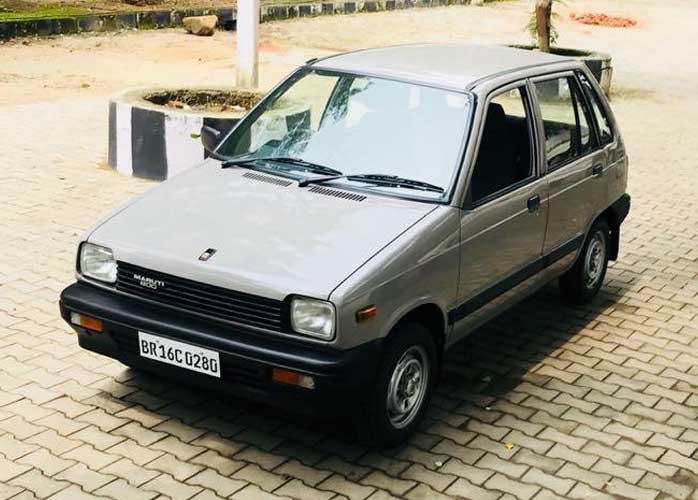
Maruti 800 front three quarter view
(Image source)

Maruti 800 rear three quarter view
(Image source)
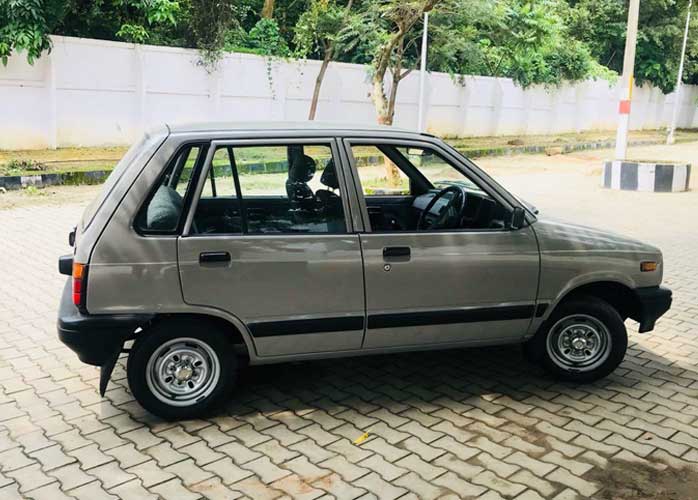
Maruti 800 rear three quarter view
(Image source)

Maruti 800 Type 1 Front Grill

Maruti 800 Type 2 Front Grill receives Maruti Logo

Maruti 800 Type 2 Facelift receives a concealed bonnet lid hook.
The car brought about many more changes which made it worthy of being a benchmark once again. Type 1 had a monogram of its’ model name on the grill itself. It also had a bonnet hook placed on top of the bonnet.
Type 2 featured the Maruti logo on the front, and the bonnet hook was moved towards the top of the grille, neatly tucked out of vision. It also came with low beam lights which were placed on the upper lip of the bumper, coupled with indicator lights.

Maruti 800 DX Type 1
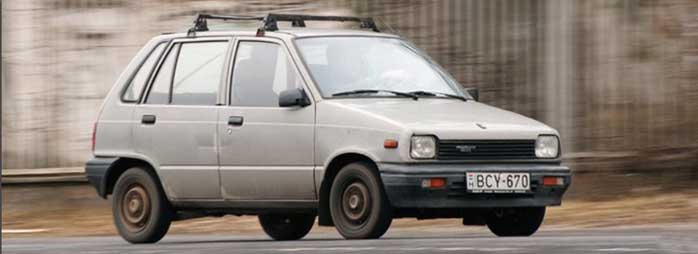
Maruti 800 Standard Trim Type 1
(Image source)
The Maruti 800 SB308 was also one of the first hatchbacks to feature a blind spot window, giving it a proper D pillar. The black protective cladding was the only distinguishing factor externally between the DX and Standard models.

